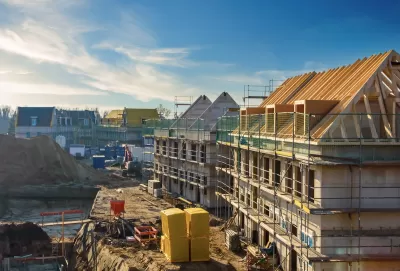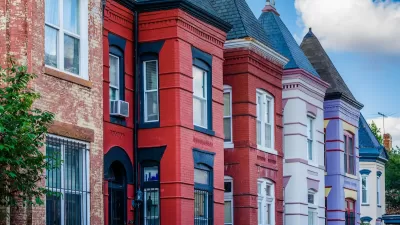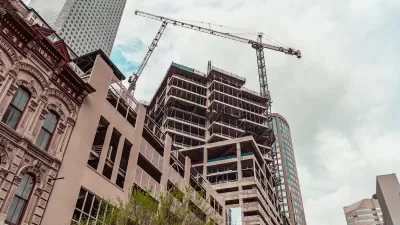Hard costs like labor and materials combined with ‘soft’ costs such as permitting make building in the San Francisco Bay Area almost three times as costly as in Texas cities.

A new report from the RAND Corporation highlights the differences in the cost of building housing in the Bay Area as compared to Texas.
According to an article by Christian Leonard in the San Francisco Chronicle, just two Texas metropolitan areas, Dallas and Houston, approved more new housing permits in 2024 than the entire state of California, and this largely comes down to the difference in cost. California’s production cost per rentable square foot is 2.3 times higher than Texas’. In the Bay Area, construction costs are three times those in Texas.
A combination of factors, including stricter zoning rules, higher permitting fees, higher labor wages, and earthquake and energy efficiency requirements, all contribute to California’s higher costs. “It takes an average of nearly two years longer to finish a multifamily project in California than it does in Texas, the report found, adding to borrowing and rental costs.”
Among the report’s recommendations to reduce costs in California: requiring cities to approve or deny permits within 30 days to eliminate costly delays; promoting large-scale upzoning and reducing development fees for infrastructure; and adjusting requirements for affordable housing to make them less onerous. However, some experts warn that some costs are necessary and help address issues such as homelessness and climate change that California lawmakers tend to prioritize.
FULL STORY: Here’s how much it costs to build an apartment in the Bay vs Texas

Planetizen Federal Action Tracker
A weekly monitor of how Trump’s orders and actions are impacting planners and planning in America.

Restaurant Patios Were a Pandemic Win — Why Were They so Hard to Keep?
Social distancing requirements and changes in travel patterns prompted cities to pilot new uses for street and sidewalk space. Then it got complicated.

Map: Where Senate Republicans Want to Sell Your Public Lands
For public land advocates, the Senate Republicans’ proposal to sell millions of acres of public land in the West is “the biggest fight of their careers.”

Maui's Vacation Rental Debate Turns Ugly
Verbal attacks, misinformation campaigns and fistfights plague a high-stakes debate to convert thousands of vacation rentals into long-term housing.

San Francisco Suspends Traffic Calming Amidst Record Deaths
Citing “a challenging fiscal landscape,” the city will cease the program on the heels of 42 traffic deaths, including 24 pedestrians.

California Homeless Arrests, Citations Spike After Ruling
An investigation reveals that anti-homeless actions increased up to 500% after Grants Pass v. Johnson — even in cities claiming no policy change.
Urban Design for Planners 1: Software Tools
This six-course series explores essential urban design concepts using open source software and equips planners with the tools they need to participate fully in the urban design process.
Planning for Universal Design
Learn the tools for implementing Universal Design in planning regulations.
Heyer Gruel & Associates PA
JM Goldson LLC
Custer County Colorado
City of Camden Redevelopment Agency
City of Astoria
Transportation Research & Education Center (TREC) at Portland State University
Camden Redevelopment Agency
City of Claremont
Municipality of Princeton (NJ)





























